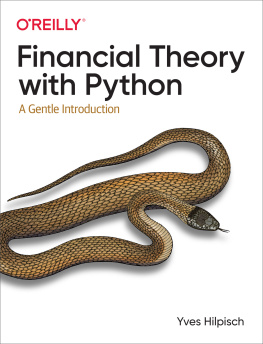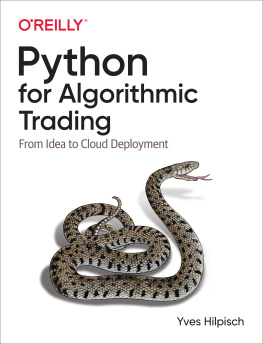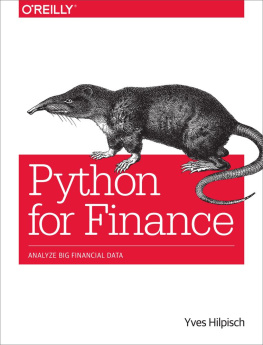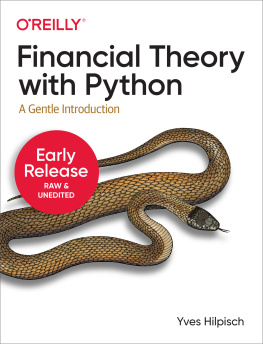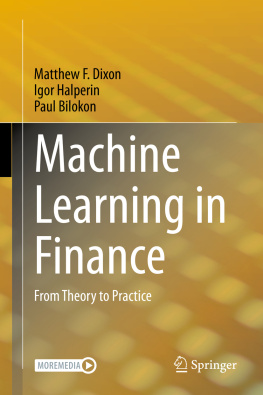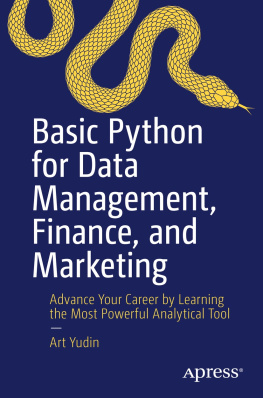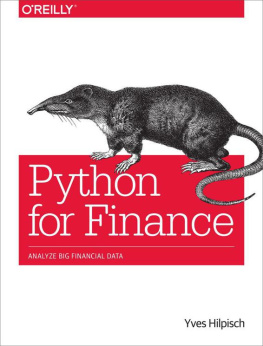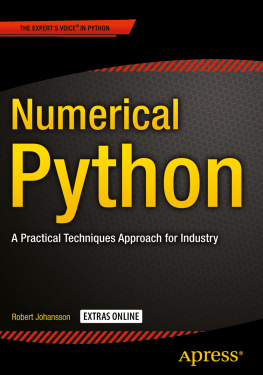Yves Hilpisch - Financial Theory with Python: A Gentle Introduction
Here you can read online Yves Hilpisch - Financial Theory with Python: A Gentle Introduction full text of the book (entire story) in english for free. Download pdf and epub, get meaning, cover and reviews about this ebook. year: 2021, publisher: OReilly Media, genre: Romance novel. Description of the work, (preface) as well as reviews are available. Best literature library LitArk.com created for fans of good reading and offers a wide selection of genres:
Romance novel
Science fiction
Adventure
Detective
Science
History
Home and family
Prose
Art
Politics
Computer
Non-fiction
Religion
Business
Children
Humor
Choose a favorite category and find really read worthwhile books. Enjoy immersion in the world of imagination, feel the emotions of the characters or learn something new for yourself, make an fascinating discovery.
- Book:Financial Theory with Python: A Gentle Introduction
- Author:
- Publisher:OReilly Media
- Genre:
- Year:2021
- Rating:5 / 5
- Favourites:Add to favourites
- Your mark:
Financial Theory with Python: A Gentle Introduction: summary, description and annotation
We offer to read an annotation, description, summary or preface (depends on what the author of the book "Financial Theory with Python: A Gentle Introduction" wrote himself). If you haven't found the necessary information about the book — write in the comments, we will try to find it.
Nowadays, finance, mathematics, and programming are intrinsically linked. This book provides the relevant foundations of each discipline to give you the major tools you need to get started in the world of computational finance.
Using an approach where mathematical concepts provide the common background against which financial ideas and programming techniques are learned, this practical guide teaches you the basics of financial economics. Written by the best-selling author of Python for Finance, Yves Hilpisch, Financial Theory with Python explains financial, mathematical, and Python programming concepts in an integrative manner so that the interdisciplinary concepts reinforce each other.
- Draw upon mathematics to learn the foundations of financial theory and Python programming
- Learn about financial theory, financial data modeling, and the use of Python for computational finance
- Leverage simple economic models to better understand basic notions of finance and Python programming concepts
- Use both static and dynamic financial modeling to address fundamental problems in finance, such as pricing, decision-making, equilibrium, and asset allocation
- Learn the basics of Python packages useful for financial modeling, such as NumPy, pandas, Matplotlib, and SymPy
Yves Hilpisch: author's other books
Who wrote Financial Theory with Python: A Gentle Introduction? Find out the surname, the name of the author of the book and a list of all author's works by series.

